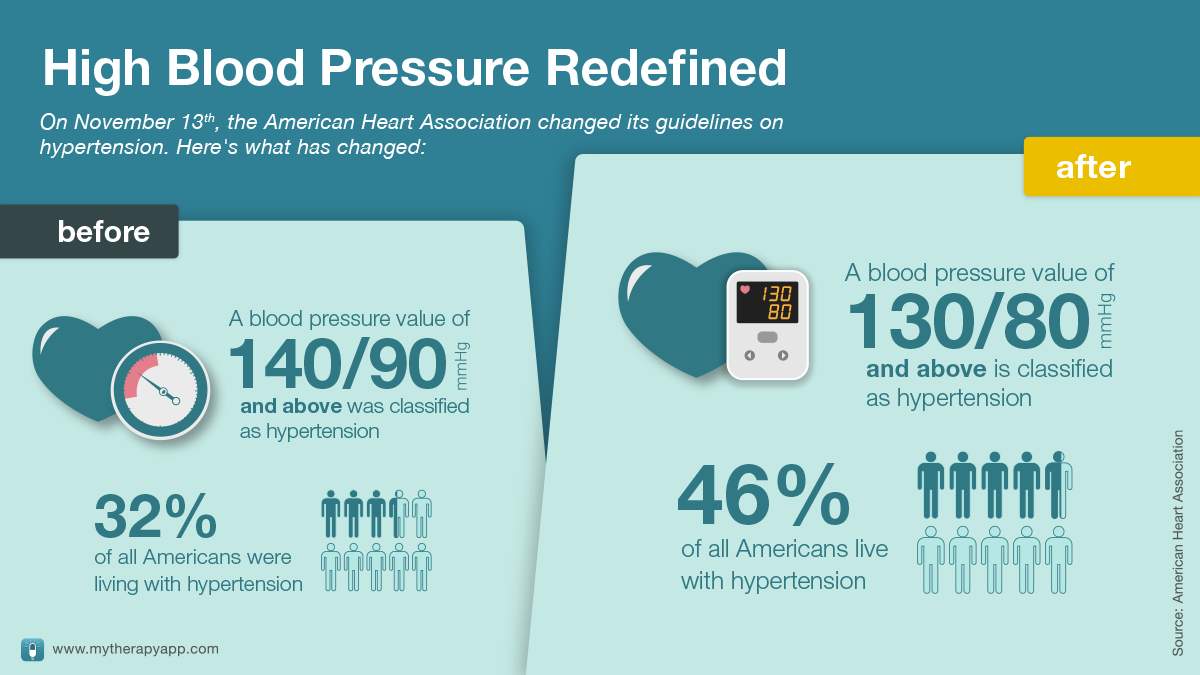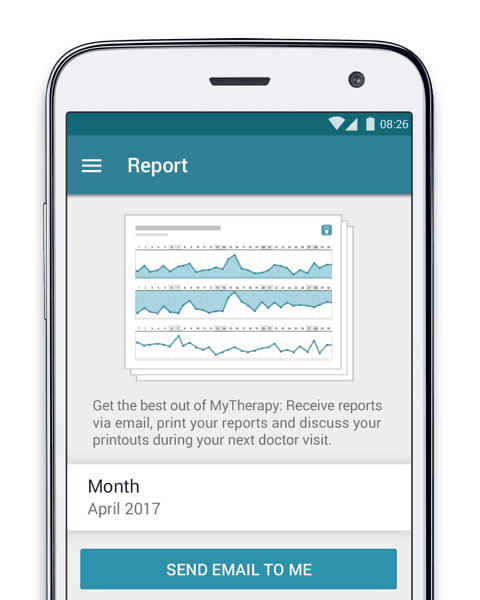In the time it took to publish a press release, the number of American adults estimated to be living with high blood pressure shot up by 14% last month, to over 100 million people. This was after doctors and experts from the American Heart Association (AHA), American College of Cardiology (ACC), and nine other organizations reviewed more than 900 studies, and concluded that the threshold for hypertension should be lowered from 140/90 mmHg to 130/80 mmHg. The estimated 31 million people whose blood pressure falls between these two figures are now classed as living with stage 1 hypertension. For many, medication is not the recommended course of action. Rather, making healthy lifestyle changes can be enough to bring blood pressure down, mitigating the risk of further health complications. Unfortunately, many people are completely unaware they are living with hypertension, and thus may not realize such changes need to be made. Here is how tracking blood pressure at home could raise awareness of the condition, and provide long-term health benefits.
Awareness is Key
Persistent high blood pressure can damage organs such as the heart, brain, or kidneys, and increases the risk of a heart attack or stroke. It causes an estimated 7.5 million deaths worldwide each year. Part of what makes hypertension so dangerous is that it rarely presents any obvious symptoms, which means it often goes undetected. This is why you may hear it referred to as the silent killer.
As with any condition, the first step in tackling hypertension is being aware of it in the first place. There are various risk factors that put one at risk of hypertension, and those risk factors extend even further after the reclassification. They include:
- Age: the new guidelines are likely to affect those over 45
- Gender: men are more likely to develop hypertension at a younger age
- Family history: those whose parents or close family members live with hypertension are at an increased risk
- Race: prevalence of hypertension in African-Americans is among the highest of any demographic in the world
- Weight: being overweight or obese increases the risk of hypertension
- Inactive lifestyle: a lack of physical exercise increases the chance of high blood pressure, and of being overweight
- Diet: an unhealthy diet carries similar risks to a lack of exercise. In particular, sodium-heavy diets have been linked to hypertension
Benefits of Testing at Home
For those at risk of hypertension, visiting a doctor should be the first step. It is recommended that everyone has their blood pressure checked at least every five years, and those at a heightened risk should do so more regularly.
In addition to that, home-testing can also prove to be a valuable tool in providing more thorough information, and tracking blood pressure over an extended period of time. This could be particularly useful for those who now fall into the stage 1 hypertension category. At this stage, it is likely that lifestyle changes are recommended over medication, and home-testing is a great way of tracking progress.
A key benefit of testing at home is that it addresses the inconsistency of blood pressure. After all, it is not a static measurement, and in most cases it follows a standard pattern throughout the day. It reaches its lowest point while you sleep, beginning to rise shortly before you wake. It continues to increase throughout the morning, and reaches its peak in the early to mid-afternoon. It begins to drop again throughout the evening, before starting the cycle once more. This cycle is largely predictable, so a doctor can take it into account when taking a reading.
However, there are other variables that can drastically impact your blood pressure. Accounting for these can be much more of a challenge. Your emotional state is one such variable. If you are anxious, stressed, or angry, your blood pressure will likely increase as your muscles tense. These emotions may be triggered simply by being in a doctor’s office, so your results may increase in such an environment. This is known as white coat syndrome.
Talking to those around you when having your blood pressure taken can also significantly increase your results, particularly if the subject is regarding your health, which it likely will be under the circumstances. Talking about a stressful or emotional topic appears to exacerbate the aforementioned effects of anxiety. The connection between verbal communication and cardiovascular reactions, such as increased blood pressure, is a complex one, but one that numerous studies suggest is profound. James J. Lynch, Ph.D., says the blood pressure of Holocaust survivors rocketed when they talked about their worst experiences, yet no such spike occurred when they silently reflected on the very same memories. While that is an extreme example, it supports other such studies that have investigated the link. When it comes to having your blood pressure measured, silence really can be golden.
There are other factors that have been shown to influence blood pressure. Caffeinated and alcoholic drinks raise blood pressure, as does the need to urinate. While smoking is never recommended, doing so in the 30 minutes prior to taking a blood pressure reading may also lead to an inflated result. Cold temperatures can cause a similar rise, while dehydration has the opposite effect and causes pressure to drop.
When taking all of the above into account, it is easy to understand why any single reading may be difficult to contextualize, and why readings taken at home help navigate these issues and flush out anomalous readings.
How to Test at Home
Taking your own blood pressure readings is a relatively simple process, but must be done correctly to be worthwhile. Take a look at our post, ‘Measuring Your Blood Pressure at Home in 5 Easy Steps’ for information about the equipment you will need, and a straight-forward guide.
If you are unsure about any aspect of taking your own blood pressure, speak to your doctor or trained professional about a demonstration.
Keeping a Record of Your Results
The benefit of measuring your own blood pressure is that you are able to track progress over a period of time. For this to be possible, you must keep an accurate record of your results. One way to do this is with good old pen and paper. However, with over three-quarters of Americans now owning smartphones, why not put that technology to good use? Technology and health now go hand-in-hand, and apps are a key component of that relationship.
Using MyTherapy (free for iOS and Android), you can set reminders to ensure you take your measurements at the same time each day. Then simply enter your readings, and the app will safely store your results. All of the information you enter can be collated into a health report, which will show you how your blood pressure (and any other measurement you wish to enter, such as heart-rate) has developed over the course of the month. Your report can be shared digitally with your doctor, or printed out.
It is a safe and reliable way of tracking your blood pressure from home, and the information you gather can be extremely useful in helping your doctor assess your blood pressure, and necessary course of action.
Limitations of Testing at Home
Home testing should be done in addition to regular doctor’s appointments, not instead of. Hypertension is a serious medical condition, and should not be dealt with without continued input from professionals. If you have been prescribed medications, do not stop taking them as instructed, even if you notice improvements in your readings.
Ultimately, home testing is not a substitute for professional medical care, but can be a valuable accompaniment.
Would you like to know more about hypertension?
- Measuring Your Blood Pressure at Home in 5 Easy Steps
- Hypertension In The UK: 2017 Facts, Signs, Causes and Treatments [Infographic]
Learn about common hypertension medications from our DrugWiki FAQ pages:



